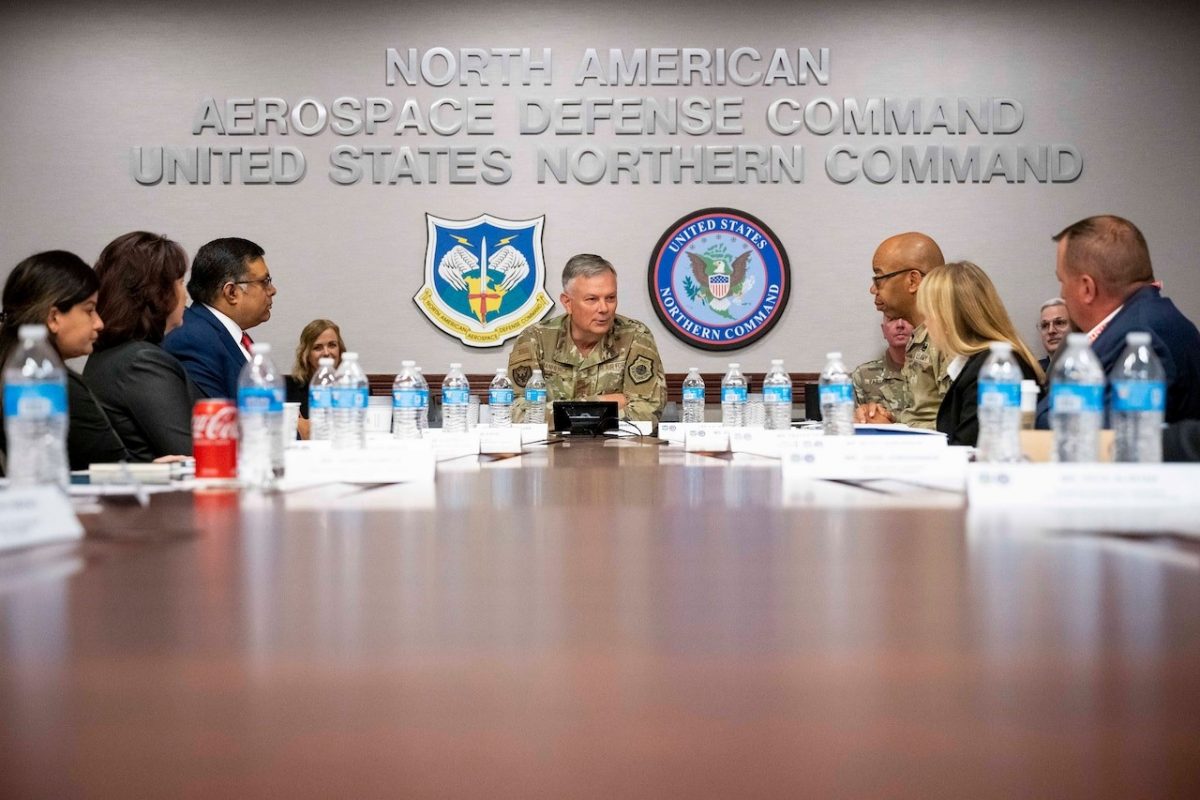As we noted in Part 1, the dramatically deteriorating national security picture for the United States and its allies prompted a review of “America’s Strategic Posture.” We present Part 2, reviewing key strategic points.
STRATEGY
To achieve the most effective strategy for stability in light of the 2027-2035 threat environment, the Commission identifies three necessary changes: ` The United States must develop and effectively implement a truly integrated, whole-of-government strategy to address the 2027-2035 threat environment. The objectives of U.S. strategy must include effective deterrence and defeat of simultaneous Russian and Chinese aggression in Europe and Asia using conventional forces. If the United States and its Allies and partners do not field sufficient conventional forces to achieve this objective, U.S. strategy would need to be altered to increase reliance on nuclear weapons to deter or counter opportunistic or collaborative aggression in the other theater. ` The size and composition of the nuclear force must account for the possibility of combined aggression from Russia and China. U.S. strategy should no longer treat China’s nuclear forces as a “lesser included” threat. The United States needs a nuclear posture capable of simultaneously deterring both countries. The Commission recommends the United States maintain a nuclear strategy consistent with the Law of Armed Conflict (LOAC), based on six fundamental tenets—assured second strike, flexible response, tailored deterrence, extended deterrence and assurance, calculated ambiguity in declaratory policy, hedge against risk—and apply these tenets to address the 2027-2035 threat.
STRATEGIC POSTURE
In the context of a strategic posture deploying both conventional and nuclear capability, the Commission believes the traditional role of nuclear weapons in U.S. defense strategy remains valid and of continuing importance: deterrence of adversaries; assurance of Allies; achieving U.S. objectives should deterrence fail; and hedging against adverse events. The Commission recommends fully and urgently executing the U.S. nuclear modernization Program of Record (POR), which includes replacement of all U.S. nuclear delivery systems, modernization of their warheads, comprehensive modernization of U.S. nuclear command, control, and communications (NC3), and recapitalizing the nuclear enterprise infrastructure at the DOD and DOE/NNSA. The current modernization program should be supplemented to ensure U.S. nuclear strategy remains effective in a two-nuclear-peer environment. Comprehensive risk-mitigating actions across U.S. nuclear forces must be executed to ensure that delays in modernization programs or early age-out of currently deployed systems do not result in militarily significant shortfalls in deployed nuclear capability. The U.S. strategic nuclear force posture should be modified to: ` Address the larger number of targets due to the growing Chinese nuclear threat. ` Address the possibility that China will field large-scale, counterforce-capable missile forces that pose a threat to U.S. strategic nuclear forces on par with the threat Russia poses to those forces today. ` Assure the United States continues to avoid reliance on executing Intercontinental Ballistic Missile (ICBM) launch under attack to retain an effective deterrent. ` Account for advances in Russian and Chinese integrated air and missile defenses (IAMD). The U.S. theater nuclear force posture should be urgently modified to: ` Provide the President a range of militarily effective nuclear response options to deter or counter Russian or Chinese limited nuclear use in theater. ` Address the need for U.S. theater nuclear forces deployed or based in the Asia-Pacific theater. ` Compensate for any shortfall in U.S. and allied non-nuclear capabilities in a sequential or simultaneous two-theater conflict against Russia and China. ` Address advances in Russian and Chinese IAMD.
NUCLEAR SECURITY ENTERPRISE INFRASTRUCTURE AND ORGANIZATION
The Commission recommends the DOD and DOE/NNSA strategic infrastructure be expanded to have sufficient capacity to: ` Meet the capability and schedule requirements of the current nuclear modernization POR and the requirements of the force posture modifications recommended by the Commission in time to address the two-peer threat. ` Provide an effective hedge against four forms of risk: technical failure of a warhead or delivery system, programmatic delays, operational loss of delivery systems, and further deterioration of the geopolitical environment. ` Flex to respond to emerging requirements in a timely fashion. To support the proposed strategy, the Commission recommends Congress fund an overhaul and expansion of the capacity of the U.S. nuclear weapons defense industrial base and the DOE/NNSA nuclear security enterprise, including weapons science, design, and production infrastructure. Specifically: ` Congress should fund the full range of NNSA’s recapitalization efforts, such as pit production and all operations related to critical materials. ` Congress should forge and sustain bipartisan consensus and year-to-year funding stability to enable the defense industry to respond to innovative DOD contracting approaches and invest with more certainty. ` Congress should enact annual DOD and DOE authorization and appropriation bills before the beginning of each fiscal year. ` Congress should place the purview of all “050” programs (President’s Budget line item for “national security”) that are in NNSA under Defense appropriations subcommittees (House Appropriations Committee-Defense (HAC-D), Senate Appropriations Committee Defense (SAC-D). ` Cabinet Secretaries, working with states and union leaders, should establish and increase the technical education and vocational training programs required to create the nation’s necessary skilled-trades workforce for the nuclear enterprise. The Commission recommends a number of specific actions to expand the capacity and effectiveness of the nation’s infrastructure and supply chain for its strategic capabilities.
The Report concludes tomorrow
Photo: Air Force Gen. Glen D. VanHerck, commander, North American Aerospace Defense Command and U.S. Northern Command, speaks with members from the Cybersecurity and Infrastructure Security Agency as well as industry leaders at the NORAD and USNORTHCOM headquarters on Peterson Space Force Base, Colo.(DoD)
